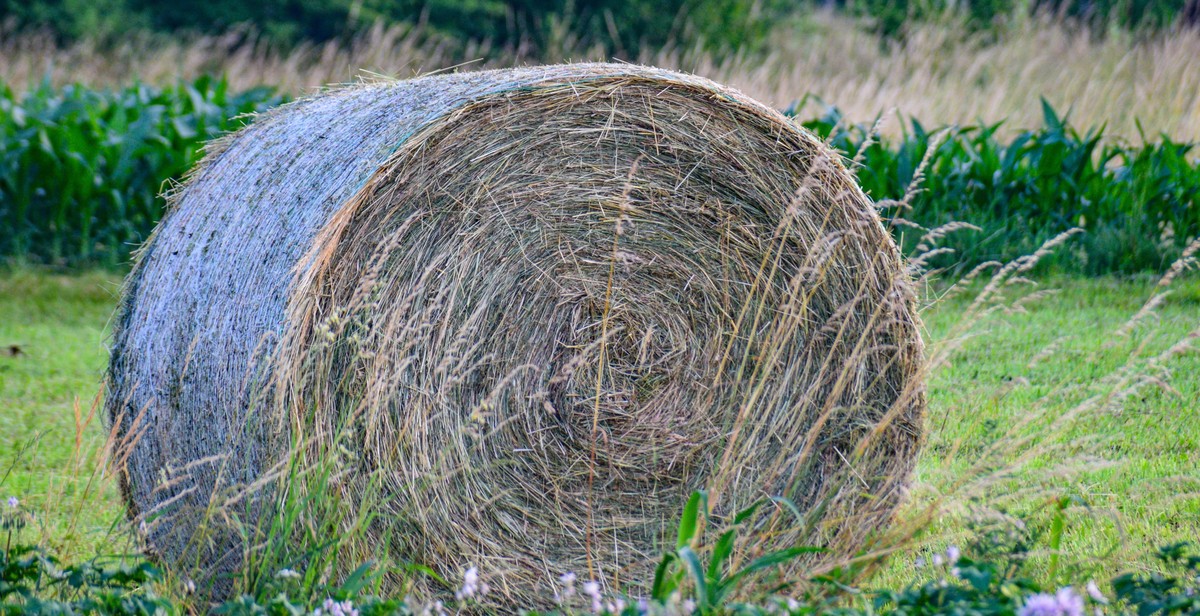Introduction
Robotics has emerged as a game-changer in the field of agriculture, revolutionizing traditional farming practices and paving the way for enhanced productivity and sustainability. With the advent of advanced technologies, such as artificial intelligence (AI), machine learning, and autonomous systems, robots are being increasingly deployed in various agricultural tasks, ranging from automated harvesting to precision farming.
Automated harvesting, one of the most significant applications of robotics in agriculture, has transformed the way crops are collected. Robotic harvesters equipped with computer vision systems and robotic arms can efficiently and accurately pick fruits and vegetables, reducing labor costs and ensuring higher crop yields. These robots can work tirelessly, even in challenging weather conditions, resulting in quicker and more efficient harvesting processes.
Precision farming, another area where robotics has made significant strides, involves the use of robots for precise and targeted agricultural practices. These robots, equipped with sensors, GPS technology, and data analytics capabilities, can monitor soil conditions, analyze crop health, and apply fertilizers and pesticides with utmost precision. By optimizing resource utilization and minimizing environmental impact, precision farming helps farmers achieve higher crop quality and yield.
This article delves into the various applications of robotics in agriculture, highlighting the benefits they offer and the challenges they address. It explores the advancements in robotic technology, the impact on farming practices, and the future potential of robotics in shaping the agricultural industry.
Benefits of Robotics in Agriculture
Robotics in agriculture has revolutionized the way farming is done, offering numerous benefits that contribute to increased efficiency, reduced labor costs, and improved crop quality and yield.
Increased Efficiency
Robotic technology has the ability to perform repetitive tasks with precision and accuracy, leading to increased efficiency in agricultural operations. Robots can work around the clock, without the need for breaks or rest, resulting in continuous productivity. This not only saves time but also allows farmers to accomplish more in less time, maximizing their overall output.
Reduced Labor Costs
One of the significant advantages of robotics in agriculture is the potential for reduced labor costs. With automation taking over manual tasks, farmers can significantly reduce their dependence on human labor. Robots can perform tasks such as planting, weeding, and harvesting, which traditionally require a large workforce. By reducing the need for manual labor, farmers can save on labor costs and allocate their resources more efficiently.
Improved Crop Quality and Yield
Robotics technology enables precision farming practices, leading to improved crop quality and yield. Robots can precisely apply fertilizers, pesticides, and herbicides, ensuring that crops receive the right amount of nutrients and protection. They can also monitor soil conditions, temperature, and humidity, allowing farmers to make data-driven decisions to optimize crop growth. With increased accuracy and real-time monitoring, farmers can detect issues early on and take proactive measures, resulting in higher crop yields and improved overall quality.
In conclusion, the benefits of robotics in agriculture are vast. Increased efficiency, reduced labor costs, and improved crop quality and yield are just a few of the advantages that this technology brings to the farming industry. As robotics continues to advance, we can expect even more innovative solutions to enhance agricultural practices and contribute to sustainable farming.

Applications of Robotics in Agriculture
Automated Harvesting
One of the most prominent applications of robotics in agriculture is automated harvesting. Robots equipped with advanced computer vision and machine learning algorithms can identify and pick ripe fruits and vegetables with precision and efficiency. These robots can work tirelessly, reducing labor costs and increasing productivity. Automated harvesting also minimizes damage to crops and ensures a higher yield.
Precision Farming
Robotics plays a crucial role in precision farming, optimizing agricultural practices for maximum efficiency. Robots equipped with sensors and cameras can analyze soil composition, moisture levels, and crop health. This data enables farmers to make informed decisions about irrigation, fertilization, and pest control, resulting in reduced resource waste and increased crop yield.
Weed and Pest Control
Robots are revolutionizing weed and pest control in agriculture. With their advanced imaging systems, robots can identify and target weeds, eliminating the need for harmful herbicides. They can also detect and remove pests, minimizing crop damage and reducing the reliance on pesticides. This approach not only improves the quality of produce but also promotes environmentally friendly farming practices.
Monitoring and Data Collection
Robots equipped with various sensors and cameras can continuously monitor crop growth, weather conditions, and other relevant parameters. They collect vast amounts of data that can be analyzed to optimize farming practices and make accurate predictions. This real-time monitoring and data collection provide valuable insights to farmers, enabling them to make timely and informed decisions.
Greenhouse Automation
Greenhouse automation is another area where robotics is making a significant impact. Robots can handle tasks such as seeding, transplanting, and harvesting in controlled environments. They can adjust environmental conditions, such as temperature and humidity, to create optimal growing conditions. This automation improves efficiency, reduces labor costs, and ensures consistent crop quality.

Challenges and Limitations
Despite the promising advancements in robotics technology in agriculture, there are several challenges and limitations that need to be addressed for widespread adoption and implementation. These challenges include:
High Initial Investment
One of the primary challenges in adopting robotics in agriculture is the high initial investment required. The cost of acquiring robotic systems, including hardware, software, and training, can be significant for farmers, especially small-scale farmers with limited resources. Additionally, the maintenance and repair costs associated with robotics systems can also add to the overall financial burden.
Lack of Awareness and Infrastructure
Another challenge is the lack of awareness and infrastructure to support the integration of robotics in agriculture. Many farmers may not be aware of the potential benefits and capabilities of robotics technology in improving their agricultural operations. Furthermore, the availability of reliable internet connectivity and power supply is crucial for the seamless operation of robotics systems, which may be a limitation in certain rural areas.
Technical Complexity
The technical complexity of robotics systems can pose a challenge for farmers who may not have the necessary skills or expertise to operate and maintain such advanced technology. Training and education programs need to be developed to ensure farmers can effectively utilize robotics systems and troubleshoot any technical issues that may arise. Additionally, the integration of robotics technology with existing agricultural machinery and systems may require additional technical expertise and compatibility considerations.
Addressing these challenges and limitations is essential to realize the full potential of robotics in agriculture. Governments, research institutions, and industry stakeholders need to collaborate to develop strategies and initiatives that promote awareness, provide financial support, and offer training programs to farmers. Only by overcoming these challenges can the widespread adoption of robotics technology in agriculture be achieved.
Future of Robotics in Agriculture
The future of robotics in agriculture holds immense potential to revolutionize the way farming is done. With advancements in technology and the increasing need for sustainable and efficient farming practices, robotics is poised to play a crucial role in the agriculture industry.
Automated Harvesting
One area where robotics is expected to have a significant impact is in automated harvesting. Harvesting crops is a labor-intensive and time-consuming process. However, robots equipped with advanced sensors and machine learning algorithms can be programmed to identify ripe crops, pick them gently, and sort them based on quality. This not only reduces the need for manual labor but also ensures higher yields and minimal crop damage.
Precision Farming
Robotics can also revolutionize precision farming techniques. By utilizing robotics and artificial intelligence, farmers can collect real-time data on soil condition, moisture levels, and crop health. This data can then be analyzed to optimize the use of resources such as water, fertilizers, and pesticides. Robots equipped with precision sprayers can target specific areas of the field, reducing the overall use of chemicals and minimizing environmental impact.
Autonomous Monitoring and Maintenance
Robots can be deployed in agricultural fields for autonomous monitoring and maintenance tasks. Drones equipped with cameras and sensors can provide valuable insights into crop health, growth patterns, and pest infestations. Additionally, robots can be programmed to perform routine maintenance tasks such as irrigation system checks, weed removal, and equipment repairs, freeing up farmers’ time and increasing overall efficiency.
Collaborative Farming
The future of robotics in agriculture also includes collaborative farming, where robots work alongside human farmers. Robots can assist in labor-intensive tasks, such as planting seeds, weeding, and harvesting, while farmers focus on decision-making and other critical aspects of farming. This collaborative approach can enhance productivity, reduce costs, and improve overall farm management.
In conclusion, the future of robotics in agriculture is promising. From automated harvesting to precision farming and collaborative farming, robots have the potential to transform the agriculture industry by increasing efficiency, reducing labor requirements, and promoting sustainable practices.
Conclusion
In conclusion, robotics has revolutionized the agriculture industry by introducing automation and precision in various farming processes. From automated harvesting to precision farming, robots are transforming the way we grow crops and manage farms.
Increased Efficiency and Productivity
One of the major benefits of robotics in agriculture is the increased efficiency and productivity it brings. Robots can perform tasks faster and more accurately than humans, leading to higher crop yields and reduced labor costs. With the ability to work around the clock, robots can optimize farming operations and maximize output.
Precision Farming for Sustainability
Robotics enables precision farming techniques, allowing farmers to monitor and manage their crops with precision. Through sensors, drones, and autonomous vehicles, farmers can gather real-time data on soil conditions, moisture levels, and plant health. This data-driven approach helps farmers make informed decisions, optimize resource usage, and minimize environmental impact.
Addressing Labor Shortages
The agriculture industry often faces labor shortages, especially during peak seasons. By deploying robots for tasks such as planting, weeding, and harvesting, farmers can overcome these challenges. Robots can perform repetitive and physically demanding tasks with precision, reducing the need for human labor and ensuring a consistent workforce throughout the year.
Future Opportunities
The potential of robotics in agriculture is vast and continues to expand. As technology advances, we can expect to see more sophisticated robots capable of autonomous decision-making and adaptive farming practices. From crop monitoring to crop protection, robots will play a crucial role in the future of sustainable and efficient agriculture.
Overall, robotics in agriculture is a game-changer that offers numerous benefits to farmers and the environment. By embracing these technologies, we can create a more sustainable and productive future for the agriculture industry.
